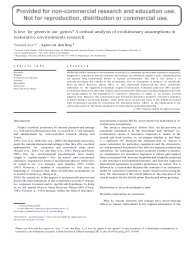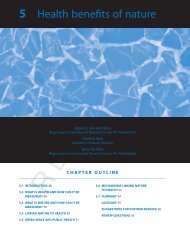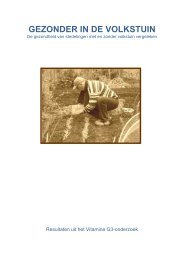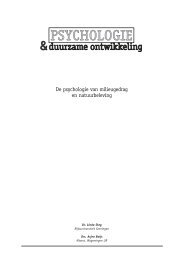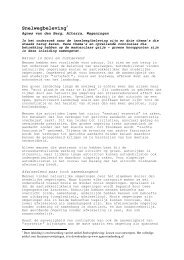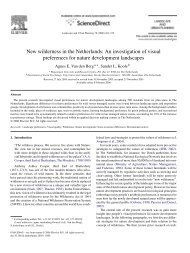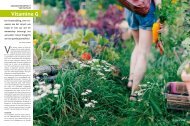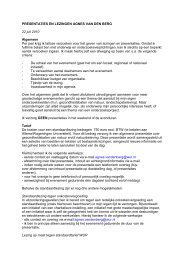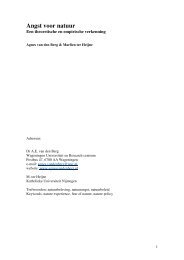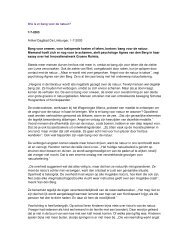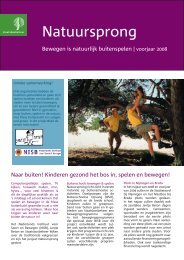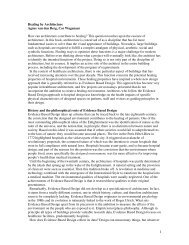healing environments in radiotherapy - Agnes van den Berg
healing environments in radiotherapy - Agnes van den Berg
healing environments in radiotherapy - Agnes van den Berg
You also want an ePaper? Increase the reach of your titles
YUMPU automatically turns print PDFs into web optimized ePapers that Google loves.
Heal<strong>in</strong>g Environments <strong>in</strong> Radiotherapy Project Report<br />
In the Netherlands, several foundations for cancer patients, their families and ex-cancer patients<br />
exist. These non-profit organisations provide the opportunity to be heard and speak with people who<br />
are go<strong>in</strong>g through similar experiences. Often the foundations also offer relax<strong>in</strong>g and creative<br />
activities organised by volunteers. These volunteers are often ex-cancer patients or their relatives.<br />
Other volunteers are not personally afflicted by cancer but have a background <strong>in</strong> nurs<strong>in</strong>g or<br />
community work.<br />
Examples of such foundations are the ‘Inloophuisen’ (for example www.<strong>in</strong>loophuishaaglan<strong>den</strong>.nl, or<br />
www.<strong>in</strong>loophuisdeboei.nl), the Toon Hermans Huis (www.thha.nl) and Foundation Kleef<br />
(www.sticht<strong>in</strong>gkleef.nl). These foundations are shar<strong>in</strong>g the same goal, namely to ma<strong>in</strong>ta<strong>in</strong> the quality<br />
of life of cancer patients as good as possible by offer<strong>in</strong>g an <strong>in</strong>formal place where every person feels<br />
welcome.<br />
Love, care and compassion<br />
Geffen (2004) po<strong>in</strong>ts out the importance of the human dimension <strong>in</strong><br />
healthcare, stat<strong>in</strong>g that “what people ultimately want most from their<br />
<strong>heal<strong>in</strong>g</strong> environment is meticulous medical care delivered with genu<strong>in</strong>e<br />
love, car<strong>in</strong>g, and compassion. […] These factors are far more important<br />
than the physical trapp<strong>in</strong>gs of the centre” (p. S98). G. <strong>van</strong> Lagen from Casa<br />
Terra agrees; “there should be staff with a cordial, warm and social<br />
appearance.” The vision of the control hospital’s <strong>radiotherapy</strong> department is to take care of patients<br />
<strong>in</strong> the same way as if for a family member, which means that a car<strong>in</strong>g and warm atmosphere should<br />
be created through the environment, but also through the attitude and behaviour of the<br />
<strong>radiotherapy</strong> staff.<br />
This means that people who work <strong>in</strong> healthcare sett<strong>in</strong>gs need to be encouraged to balance their own<br />
psychological ten<strong>den</strong>cy to disconnect from emotional aspects of their work with a will<strong>in</strong>gness to<br />
show compassion and appreciation for the patient’s feel<strong>in</strong>gs and needs. Naturally this also <strong>in</strong>volves<br />
“giv<strong>in</strong>g people the opportunity to have contact with their family or friends who can sit with them” (G.<br />
<strong>van</strong> Langen, Casa Terra) while gett<strong>in</strong>g prepared for treatment or dur<strong>in</strong>g consultations. At UMC St.<br />
Radboud, this need for ma<strong>in</strong>ta<strong>in</strong><strong>in</strong>g social contact is addressed by offer<strong>in</strong>g family members the<br />
opportunity of us<strong>in</strong>g an extra fold<strong>in</strong>g bed <strong>in</strong> the patient’s room.<br />
42



